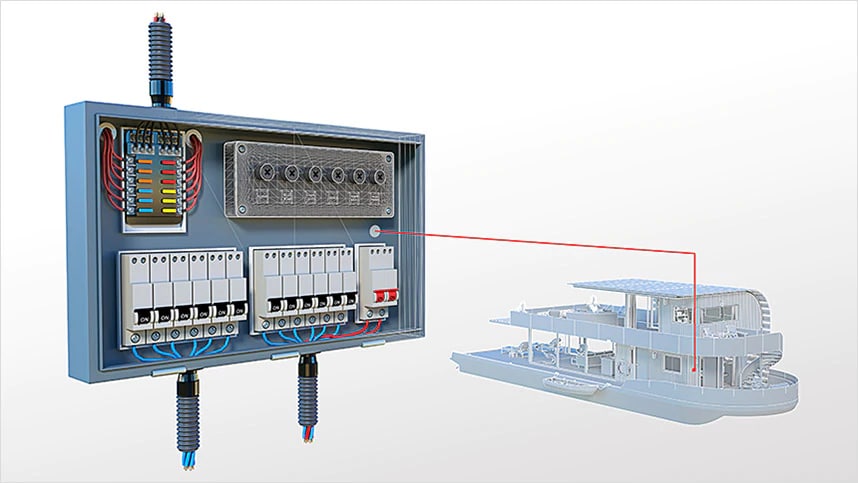Safe Residential Electrical Design Services for Secure Home Wiring
Safe Residential Electrical Design Services for Secure Home Wiring
Blog Article
Ingenious Electrical Design Solutions for Modern Infrastructure
As city settings grow progressively complicated, including technologies such as clever grids and eco-friendly energy resources becomes vital. These developments not only promise to optimize power intake yet additionally foster durability against future demands.
Relevance of Ingenious Electric Design
Cutting-edge electric design plays an essential role in contemporary infrastructure, affecting not just efficiency yet likewise sustainability. As cities progress and the need for power increases, the demand for sophisticated electrical systems ends up being extremely important. These systems should not just satisfy existing needs however likewise expect future growth and technical improvements.
A well-executed electrical design can significantly decrease energy intake, thereby decreasing operational expenses and minimizing ecological effect. By including eco-friendly power resources, such as solar panels and wind generators, cutting-edge layouts can improve energy self-reliance and strength. Moreover, smart grid modern technologies permit real-time tracking and monitoring of power circulation, maximizing efficiency and minimizing waste.
Safety and security is another essential facet of electric design. Implementing advanced innovations and strenuous requirements can reduce threats linked with electric failures, making sure a secure setting for homeowners and companies alike. In addition, cutting-edge styles assist in versatility, permitting facilities to integrate emerging innovations flawlessly.
Trick Trends in Electric Design
As the landscape of electric design proceeds to progress, several vital patterns are forming the future of the sector. One considerable fad is the integration of smart modern technology into electrical systems. The expansion of the Net of Things (IoT) has allowed real-time monitoring and control of electrical tools, enhancing effectiveness and helping with predictive maintenance.
One more trend is the growing emphasis on modular design. This technique permits for versatile and scalable solutions, enabling facilities to adapt to altering needs without considerable remodellings. Additionally, the usage of advanced simulation devices and Building Info Modeling (BIM) is coming to be increasingly prevalent, improving the design process and boosting collaboration amongst stakeholders.
In addition, improvements in products scientific research are leading to the development of lighter, extra long lasting, and energy-efficient elements. This technology is particularly crucial for high-performance structures and infrastructure jobs.
Lastly, there is a significant change in the direction of data-driven decision-making - industrial electrical design. Leveraging data analytics helps designers maximize systems for performance and cost-effectiveness. Together, these patterns symbolize a transformative age in electrical design, boosting capability, sustainability, and strength in modern facilities
Sustainable Power Solutions
Lasting energy options are progressively becoming an important focus in electric design, showing a broader dedication to ecological obligation and source efficiency. These remedies aim to minimize environmental influence while enhancing energy consumption in numerous infrastructures, from property structures to large commercial facilities.
One of the foremost techniques entails the integration of renewable energy resources, such as solar panels and wind generators, right into electric systems. This not just reduces dependence on nonrenewable fuel sources however additionally enhances power resilience. In addition, innovative power storage space systems, such as advanced batteries, allow effective administration and circulation of power, making sure that surplus power generated during top production can be made use of throughout high need periods.
Additionally, energy-efficient design techniques are see this being embraced to improve overall system performance. This consists of using energy-efficient lights, HVAC systems, and clever building technologies that adapt and keep an eye on energy usage based on occupancy and ecological conditions.
Smart Grid Technologies
The application of lasting power solutions naturally causes the expedition of clever grid technologies, which play a critical duty in improving electrical systems. Smart grids utilize progressed communication technologies and information analytics to improve the dependability, efficiency, and sustainability of electricity distribution. By integrating digital modern technology with typical grid facilities, these systems facilitate real-time tracking, automated control, and improved decision-making capacities.
One of the key functions of smart grids is their ability to accommodate sustainable energy sources, such as solar and wind power. This adaptability not only reduces dependency on nonrenewable fuel sources however also permits a more decentralized power production model. Clever grids allow need response programs, where consumers can readjust their energy usage based on real-time rates, thus advertising official site energy preservation and reducing peak load needs.
In addition, smart grid technologies enhance grid strength by making it possible for quicker identification and resolution of blackouts, inevitably decreasing downtime. With predictive maintenance and analytics, energies can maximize procedures and improve solution shipment. As communities and cities proceed to advance, smart grid technologies are essential for developing a lasting and efficient electric infrastructure that meets the demands of contemporary culture.

Future-Proofing Framework
To make sure long-lasting viability and flexibility, future-proofing framework is essential in the swiftly evolving landscape of electrical design services. As innovation developments and energy needs shift, it is vital that electric systems are made with flexibility in mind. This requires integrating scalable solutions that can suit future upgrades without necessitating comprehensive overhauls.

In addition, sustainability has to be a cornerstone of future-proofed styles. Making use of renewable power resources, such as solar and wind, and optimizing energy efficiency decrease reliance on nonrenewable fuel sources, lining up with global initiatives to battle environment change.
Verdict
By focusing on adaptability, sustainability, and performance, these solutions resolve the advancing demands of energy systems. The combination of clever grid modern technologies and lasting energy remedies boosts strength and decreases functional costs.
A well-executed electric design can dramatically reduce energy intake, consequently reducing functional costs and decreasing environmental effect. By including sustainable power sources, such as solar panels and wind turbines, cutting-edge layouts can improve power freedom and durability. In addition, cutting-edge energy storage Click Here systems, such as innovative batteries, make it possible for efficient administration and distribution of power, making certain that surplus energy generated throughout optimal production can be made use of during high need periods.
Wise grids make it possible for demand action programs, where consumers can readjust their energy usage based on real-time rates, thus promoting power conservation and reducing peak tons needs. (industrial electrical design)
As innovation advances and power demands change, it is important that electrical systems are created with adaptability in mind.
Report this page